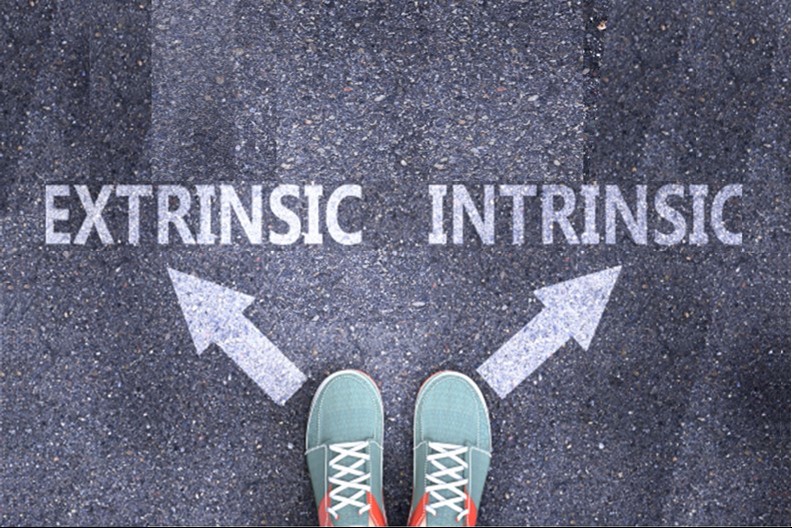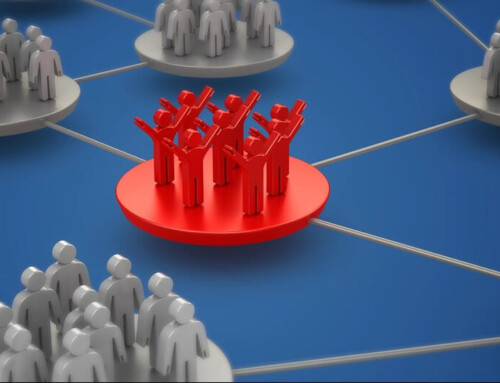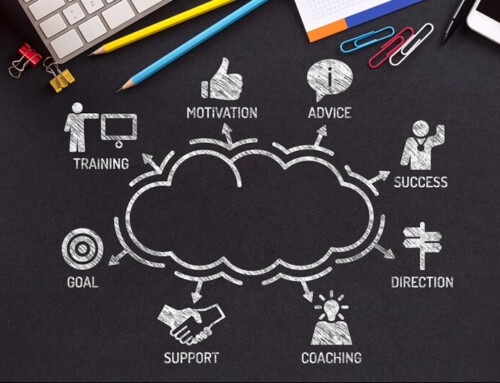Engaged, motivated employees are the lifeblood of a thriving company. However, employee engagement and motivation remain persistent challenges for many companies. One study found that 64% of employees were either not fully engaged or disengaged entirely (1). While leaders recognize there’s room for improvement, organizations struggle to keep their workplace invested. So, what’s the secret to a flourishing workplace?
One effective strategy is to offer intrinsic and extrinsic rewards. If the two are combined, the solution becomes even more powerful with research finding that:
“Management of organizations should make use of both intrinsic and extrinsic reward[s] to motivate its employees so that both individual and [o]rganizational objectives can be achieved.” (2)
WHY INTRINSIC REWARDS ARE BENEFICIAL
Intrinsic rewards are not physical in nature. Rather, they are positive emotions that arise from an employee’s accomplishments and a deep sense of satisfaction that come from performing their job well. In this way, intrinsic rewards are self-generated by the individual, as opposed to being provided by an external source.
Examples of intrinsic rewards include:
- Meaningful work
- Autonomy over their career trajectory
- Professional growth
- Mastery of new skills
- A feeling of pride in their performance
- Enjoyment of their work
Intrinsic rewards play on the human desire to have purpose and autonomy over their life. The ways each person considers themselves to have achieved these objectives can vary. Regardless of these differences, there is an important shared trait: Employees who gain intrinsic rewards tend to feel happy and fulfilled in their jobs.
With intrinsic rewards coming from within an individual, how can leadership offer intrinsic value?
Support plays a major role in the process. Make continuing educational opportunities available to your workers. Offer them ongoing training focused on their area of expertise.
Managers should encourage employees to share their work-related desires with them. Ask questions like:
- Where do you see yourself in your career one year from now? Three years? Five years?
- What do you feel is missing from your responsibilities that you would like included?
- What do you really enjoy doing in your job, and what do you wish you could do more of?
- What are some of your natural talents that work well into your career? (e.g., learning, training, focus, empathy, negotiation, etc.)
- How can we foster a sense of meaning in the work you do daily?
- What do you like best about our company culture? Where would you like to see improvements?
Once employees share their feedback, it is imperative to demonstrate that you are taking it seriously and incorporating it. This will show them that you value their contributions and want them to stay.
WHY EXTRINSIC REWARDS ARE BENEFICIAL
More people are familiar with extrinsic rewards than their intrinsic counterparts. In the workplace, they are given to employees by leadership. Where intrinsic rewards stem from positive emotions triggered by feelings of pride, accomplishment, and empowerment, extrinsic rewards are tangible or financial forms of recognition and gratitude.
Examples of extrinsic rewards include:
- Bonuses
- Incentive travel/trips
- VIP experiences
- Extra vacation days
- Flexible working arrangements
Extrinsic rewards have been used for decades because they work. These rewards are effective in part because they give employees crystal clear rewards to earn. It is obvious that if the recipient does A, they will receive B in return for their efforts. In addition, extrinsic rewards spark interest in achieving goals that employees might otherwise dismiss.
Desirability is key to making extrinsic rewards work. Leadership should resist the temptation to limit offerings to the norm – for example, a gift card. Instead, make extrinsic rewards experiential and different than employees might expect.
Learn about extrinsic rewards that boost employee engagement and morale here:
- The Reward vs. Recognition Model: What Wins?
- 3 Reasons Why Travel Incentives are a Worthwhile Investment
HOW TO COMBINE INTRINSIC AND EXTRINSIC REWARDS
Intrinsic and extrinsic rewards each have their own strengths, as well as their own weaknesses. In this way, they are almost like two sides of the same coin. When you combine them, you get the best of both worlds. Furthermore, you gain the ability to appeal to your entire workforce, with their varying personalities, interests, and sources of happiness. Employees will feel empowered by intrinsic rewards while enjoying the fruit of their labors when they receive extrinsic rewards.
Taking a dual approach also helps build and strengthen a positive company culture. Employees who are assured that their efforts will be rewarded are more likely to feel loyal and driven and want to stay with the organization long term. They are also motivated to work harder.
Combining intrinsic and extrinsic rewards is easier than you might think. For example, you could offer an incentive group trip to an exotic and appealing destination. Employees who meet the set requirements get to take the trip. This is the extrinsic piece.
You can then incorporate the intrinsic piece by setting up a day where employees team up with locals to benefit the community or an area charity in some way. Doing so serves a number of purposes. It:
- Adds a meaningful element.
- Allows employees to interact with the locals.
- Gives workers an immersive experience with a different culture.
- Builds stronger bonds between teammates.
- Fosters a sense of well-being from doing something good.
In this scenario, investing time and effort in just one trip will yield double the dividends. Combining the extrinsic and intrinsic elements allows recipients to travel while feeling good about the impact they make on a community.
UNIVERSALLY APPEALING REWARDS
Engaging and motivating a group of people with diverse interests and preferences is not easy. This is one reason why some organizations fail to offer appealing rewards. Fortunately, by combining the benefits of intrinsic and extrinsic rewards, your company will have an advantage when it comes to keeping your workforce engaged and motivated.
Considering a travel incentive program? Contact Gavel International to learn more about how we can help you increase employee engagement and motivation.
_______________________
SOURCE(S):
1 https://www.hrcloud.com/blog/8-employee-engagement-statistics-you-need-to-know
2 chrome-extension://efaidnbmnnnibpcajpcglclefindmkaj/https://core.ac.uk/download/pdf/234627487.pdf
This article was last updated on April 24, 2025






